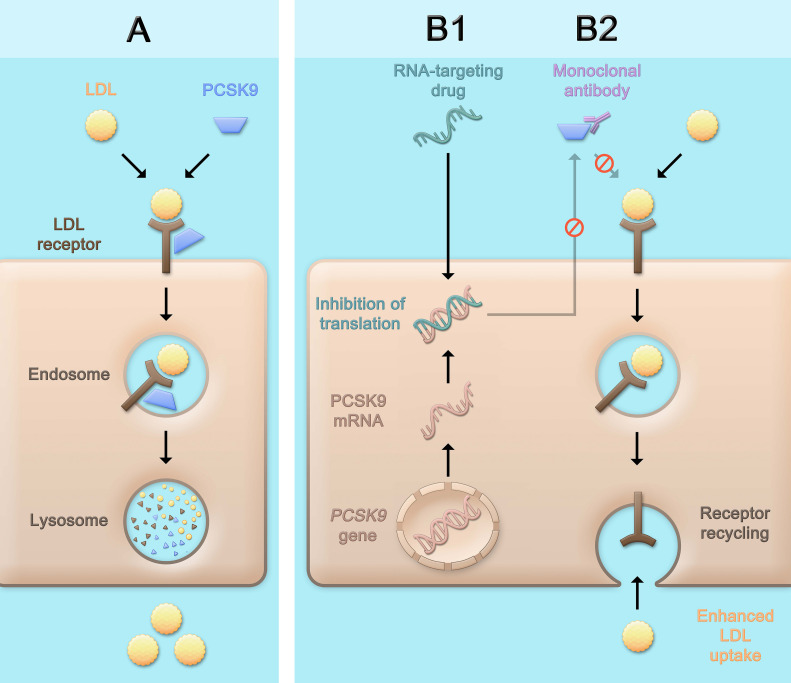FIGURE 2.
Physiological role of PCSK9 and consequences of therapeutic PCSK9 inhibition. PCSK9 binds to the LDL receptor. After internalization of the LDL receptor bound to PCSK9 (and an LDL particle), the LDL receptor is degraded (A). PCSK9 can be inhibited pharmacologically by using monoclonal antibodies (B2) that bind and neutralize PCSK9, or by RNA-targeting drugs (B1) which contain an RNA strand complementary to PCSK9 mRNA and lead to the assembly of an RNA-induced silencing complex (RISC) which degrades PCSK9 mRNA for a prolonged period of time and thereby inhibits the production of PCSK9. The consequence of both approaches is a lower concentration of PCSK9 that can bind the LDL receptor, which after internalization more often cycles back to the cell surface and can take up further LDL particles, leading to lower LDL cholesterol serum concentrations. LDL, low-density lipoprotein; PCSK9, proprotein convertase subtilisin/kexin type 9.

